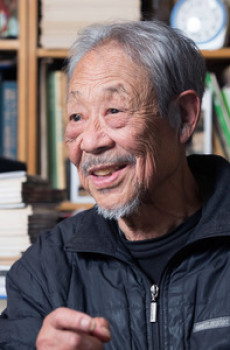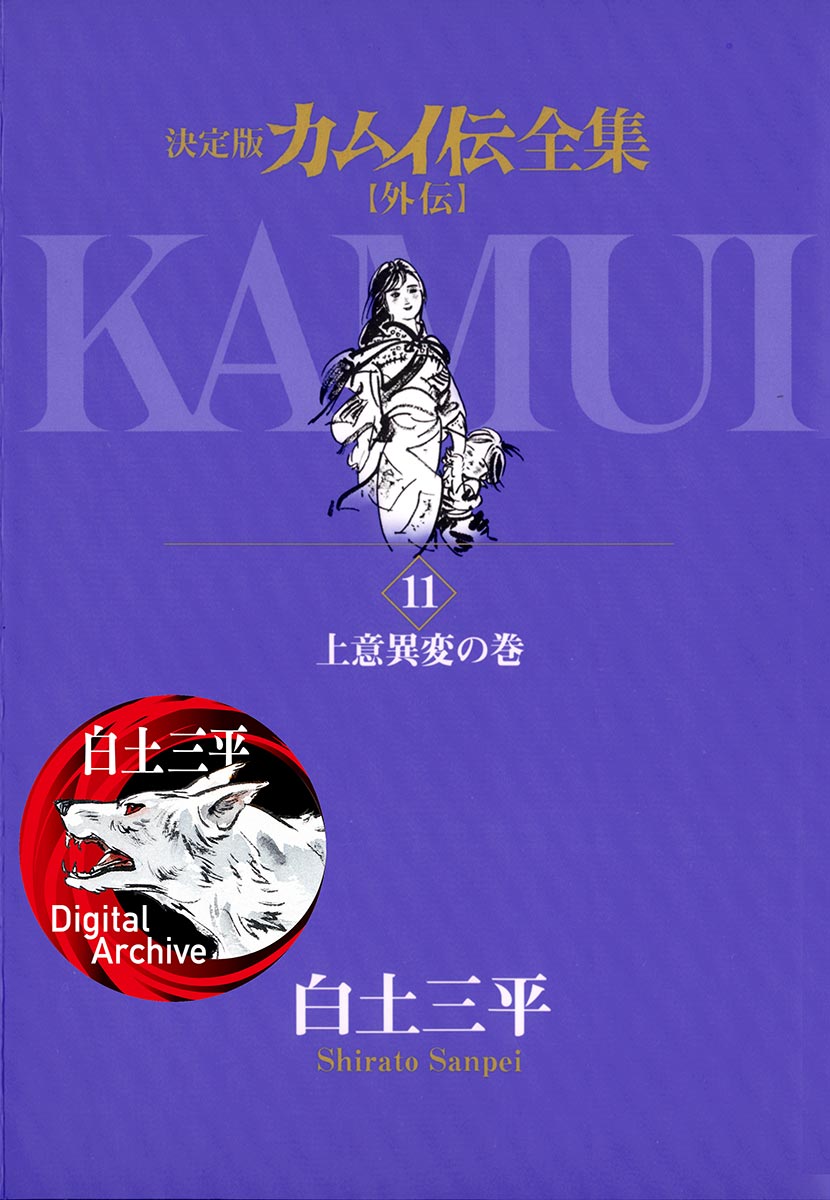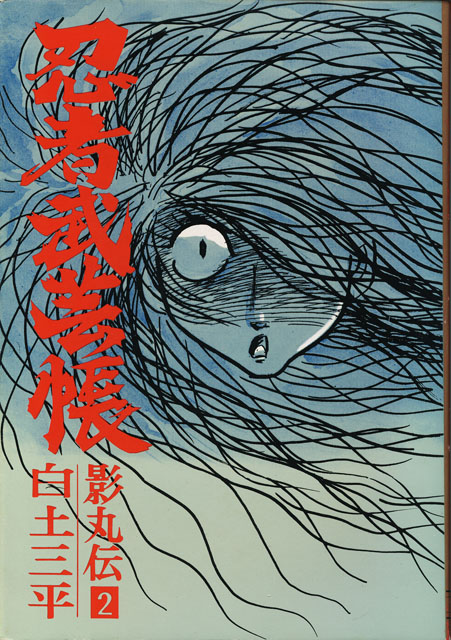
Shirato Sanpei
A Japanese manga artist and essayist known for his social criticism as well as his realistic drawing style and the characters in his scenarios. He is considered a pioneer of gekiga. The son of the Japanese proletarian painter **Toki Okamoto**, his dream to become an artist equal with his father started when he became a Kamishibai artist. He is also known for his work published in the early issues of the manga anthology magazine Garo in 1964, which he began publishing so as to serialize his comic [**Kamui.**](https://anilist.co/manga/47839/Kamui-Den/) He died on October 8, 2021 at the age of 89 due to pneumonia. His younger brother [**Tetsuji Okamoto**](https://anilist.co/staff/253586), who had worked as his assistant and later drawing [**"Kamui Gaiden Part 2"**](https://anilist.co/manga/136148/Kamui-Gaiden-Part-2/), had passed away 4 days later on October 12, 2021, also due to pneumonia. Born in 1932 in Toyotama-gun (later Suginami-ku, Tokyo) in Tokyo Prefecture. As a child, he moved from place to place, including Kobe and Osaka, near Korean villages, due to his father's activities as a painter. He grew up during the resentful years of the war and some of these dark emotions come out in the nihilistic society depicted in his work that are essentially historical dramas centered on ninjas that shed historical light on Japan, criticize oppression and discrimination. Shirato developed his style by making boards for Kamishibai shows, Influenced by the ukiyo-e of the pre-Meiji era, he diverged in his depiction of action scenes by a slow multi-phase cutting, unique to his style. He then had [**Goseki Kojima**](https://anilist.co/staff/98021/Kojima-Goseki) and [**Kusonoki Shouhei**](https://anilist.co/staff/176672/Kusonoki-Shouhei) as his assistant, as well as his brother [**Tetsuji Okamoto**](https://anilist.co/staff/253586). In spring 1938, he returned to Tokyo from Osaka, and in 1944, he entered the private Nerima Junior High School (under the old system), but soon after the war intensified, he and his family evacuated to Nakashioda Village, O-ken-gun, Nagano Prefecture (near Yagisawa Station in Ueda City), where he attended the old system Nagano Prefectural Ueda Junior High School (now Nagano Prefectural Ueda High School). The surname of a soldier named **Ushinosuke Shirato (白土牛之助)** from this old junior high school later became the origin of his pen name. In place of his father, who was suffering from Pott's disease due to the aftereffects of torture by the Special Higher Police (特別高等警察), he supports his household by doing forestry and hard work. After spending about a year in the salt pans, he moved to Sanada and then to Nishienden. In 1946, he returned to Tokyo. **Eikichi Ogihara** (later head of the Nerima branch of the Buraku Liberation League), who lived in the nearby Buraku community (Nerima-ku, Tokyo), was a schoolmate and a good friend of Shirato's younger brother Makoto, and Makoto even helped Ogihara with the family business. As a result, Ogihara said: "*I sometimes wonder if Sanpei Shirato's manga, such as 'Kamuiden, were influenced by his experiences in Nerima.*" He was introduced to the works of [**Osamu Tezuka**](https://anilist.co/staff/96938/Tezuka-Osamu) around 1947. Later, for financial reasons, he was forced to drop out from Nerima Junior High School in the middle of his third year. Began working in the studio of **Shinichi Kaneno**, an acquaintance of his father, helping him copy and color **Yamakawa Soji's** picture story shows. In 1951, under the guidance of Kaneno, he created a picture story show called "**Mr. Tomochan"(ミスタートモチャン)**. At the time, his pen name was **Noboru (ノボル)**. He continued to work on this series of picture story shows for several years. In 1955, he moved to Kanamachi, Katsushika-ku, Tokyo, where he lived with his friends and drew the picture-story show "**Kachiguri Kacchan"(カチグリかっちゃん)**. Shirato was nicknamed **"Ichiji no San-chan"(イチ二の三チャン)** by neighborhood children who came to play with him, and this became the origin of the name "Sanpei. During this period, he also used the pseudonym **Kurokawa Shin (黒川新)**. In the same year, his roommate **Takuo Segawa** founded the puppet theater company Tarouza, and Shirato participated in the production of stage scenery. In 1956, he moved to Itabashi and married **Haruko Lee (a.k.a. Mayumi Kobayashi)**, who was a member of "Tarouza". At that time, he wanted to join the Communist Party of Japan and volunteered to deliver the newspaper **"Akahata"** for one year, but was not able to do so. In 1957, she was encouraged to draw manga by **Kazuma Maki (牧かずま**), a shoujo manga artist who was a senior member of her theater company, and learned manga techniques while working as Maki's assistant. In August of the same year, her substantial debut work, **"Kogarashi Kenshi (こがらし剣士)",** was published by Tomoe Shuppan. In 1959, However, immediately after that, the publisher went bankrupt and moved to Katsuichi Nagai's company Sanyo-Sha. [**"Ninja Bugeicho"**](https://anilist.co/manga/51404/Ninja-Bugeichou/), a 17-volume work that ran until 1962, making it an unusually long work for the time. In 1961, Nagai dissolved Sanyo-sha and established Seirindo, where Shirado worked on rental books such as [**"Sasuke"**](https://anilist.co/manga/136429/Sasuke/)" and **"Ninpou Hiwa (忍法秘話)"**, etc. In 1963, he won the 4th Kodansha Children's Manga Award for [**"Sasuke"**](https://anilist.co/manga/136429/Sasuke/) and "**Seaton Doubutsuki (シートン動物記)**" based on **Kenji Uchiyama'**s novel. In 1964, Seirindo published the first issue of Garo. It was originally launched as a magazine for Shirato's new work, [**"Kamui Den"**](https://anilist.co/manga/47839/Kamui-Den/) for which he established **"Akame Production"** the same name as his previous work, ["**Akame**"](https://anilist.co/manga/41114/Akame/) and began mass production. Because Shirato was the founder of Garo, he was not paid for manuscripts fee, so he published "**Watari (ワタリ)**" and ["**Kamui Gaiden**"](https://anilist.co/manga/41749/Kamui-Gaiden/) both 1965 in other magazines in addition to "**Kamui Den**" to support his staff. In 1971, the first part of "[**Kamui Den**](https://anilist.co/manga/47839/Kamui-Den/)" ended. Although a sequel was awaited, it was not resumed for a long time, and the second part was not started until 1988, after works such as **"Shinwa Densetsu Series (神話伝説シリーズ)"** (1974-) and [**"Kamui Gaiden Part 2"**](https://anilist.co/manga/136148/Kamui-Gaiden-Part-2/) (1982-). The second part was serialized in **Big Comic** until 2000, and was completed with newly-written stories in a complete collection released in 2006. In 2009, he wrote a new work of **"Kamui Gaiden"** called **"Kamui Gaiden: Saikai (カムイ外伝-再開)"** after a long absence. In his later years, he was planning to write **"Kamui Biography Part III"**.

